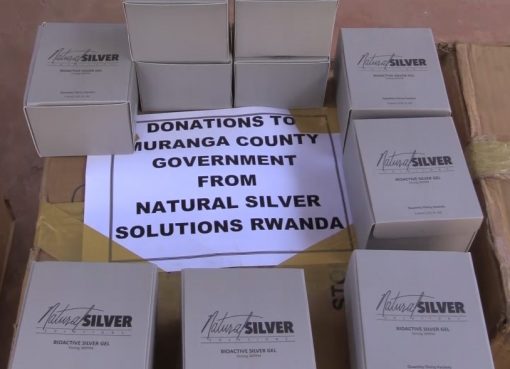Statistics from the Kenya Forest Research Institute (KEFRI) on Natural Resources conducted in 2021 showed that Narok County had a tree cover of 20.9 per cent and a forest cover of 14.9 per cent.
According to the Narok County Forest Conservator Daniel Mkung’, in a bid to reach 30 per cent tree cover, there is a need for consolidated efforts among all key stakeholders.
The major forests in the county are: Maasai Mau Forest that extends in Narok North and South sub counties, Nyakweri forest in Trans Mara West Sub County, Olposimoru Forest in Narok North, Loita Forest in Narok South and Enosupukia Forest in Narok East Sub County.
The government’s ambitious plan to increase tree cover by 15 billion trees in ten years saw the county allocate 450 million trees, which translates to planting and growing 45 million tree seedlings per year.
The main aim for the campaign was to reduce greenhouse emissions, as well as stop and reverse deforestation.
The conservator told KNA that the county has been progressing well in tree planting, though they have not met their yearly target.
“Since we launched a vigorous campaign to plant and grow trees, we have attained close to 10 million seedlings, with over 80 per cent of seedlings having been planted in forest land,” he said.
Most trees were grown in Maasai Mau Forest, where over 40, 000 hectares of land had been degraded after human invasion.
The degraded land was subdivided into 136 blocks that were open for organisations and government agencies to adapt for tree growing.
The Forest Conservator underscored that 70 blocks have been adopted by various stakeholders to plant and grow trees in the bare land.
Among the stakeholders are: Ewaso Nyiro South Development Authority (ENSDA), Kenya Water Towers, Maasai Mara University, Kenya Forest Service, Base Titanium, and the first Lady’s Landscape and Ecosystem Restoration Strategy and implementation plan for growing 500 million trees.
“We call for more partners to come on board and adopt the remaining 66 blocks for planting and growing trees. Each block is planted with approximately 1000 trees,” he said.
At Enosupukia Forest in Narok East Sub County, the Conservator said they have already planted 350 hectares out of 10,742 hectares of the bare forest land.
“This is where we are putting much of our efforts because the land was completely bare. We are working with KenGen and the Department of Trade to rehabilitate the forest,” he said.
He reiterated that Olposimoru Forest in Narok North had been rehabilitated and is currently being monitored closely by the Kenya Forest Service rangers to avert any form of destruction again.
Mkung’ lauded the initiative to recruit more rangers to man the forest land, saying out of 2,700 rangers recruited last year, 135 of them were posted in Narok County.
“The presence of forest rangers has helped to conserve the forest land. There is enough human resource to safeguard the forests,” he said.
The major threat to the forests, he said, is massive burning of charcoal and tree harvesting for posts and timber.
“This year, we have impeded over 20,000 cider posts that were being transported illegally. They are stored in our office premises as exhibits. Ten trucks, 46 motorbikes, and 22 Probox vehicles that were illegally transporting forest produce have also been seized this year,” revealed the conservator.
He applauded the Office of the Director of Prosecution (ODPP) in Narok, saying the office has been key in supporting conservation through proper prosecution of the cases.
“There is a need for a multi-agency approach to protect our natural resources in the county. Conservation efforts should not be left to the Forest Department alone,” he reiterated.
He challenged the pastoralist community to plant trees as an investment, adding that tree farming can fetch a lot of money that can boost their livelihood.
According to Mkung’, wheat and barley farmers in the county resist the planting of trees, arguing that trees are a fertile ground for quelea birds to breed.
The birds are a great threat to farmers as they feed on mature wheat and barley, causing huge losses to the farmers.
The Forest Conservator called on residents to get tree seedlings from the KFS tree nurseries to plant in their individual farms.
“We have ten nurseries across the county where interested farmers are given the seedlings free of charge. I ask everyone to visit the KFS nurseries and get enough trees for their farms,” advised Mkung’.
While speaking at the Nkaretta area during a tree planting exercise this week, Narok County Commissioner Kipkech Lotiatia called on National Government Administrative Officers (NGAO) to lead in tree planting.
“In every baraza that a chief holds, he must begin by planting a tree so as to motivate people to plant and grow trees. We should also plant trees in our individual farms and act as an example to the community,” he continued.
By Ann Salaton





